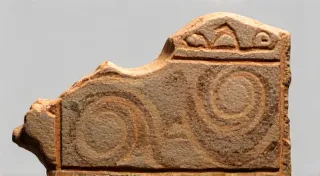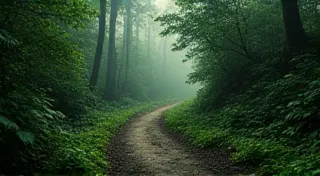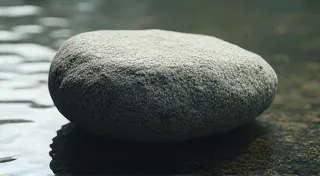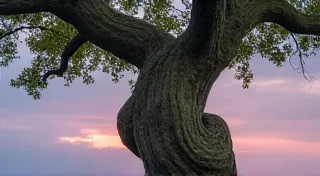Geological Palimpsest: Reading the Layers of Earth’s History in a Single Rock
There’s a certain melancholy beauty to something old, something weathered, something bearing the marks of time. Think of a beloved antique accordion – the ivory keys yellowed with age, the bellows slightly cracked but still capable of producing a wistful melody, the metallic sheen dulled by decades of use. Each imperfection isn't a flaw, but a chapter in its story, a silent testament to the hands that played it, the rooms it filled with music, the lives it touched. It’s the same with rocks – especially those that reveal themselves as layered geological palimpsests, telling stories far more ancient and profound than any human experience.
A palimpsest, in its literal sense, is a manuscript on which the original writing has been erased and rewritten, but traces of the earlier text remain visible. Geology offers us a similar phenomenon. The Earth's crust isn’t a static block; it’s a dynamic, constantly changing canvas upon which layers of sediment, volcanic ash, and metamorphic rocks are deposited, compressed, and transformed over millennia. Each layer represents a moment in time, a snapshot of environmental conditions, a record of biological activity – or sometimes, catastrophic events. Reading these layers is like deciphering a geological manuscript, a chronicle written in stone.
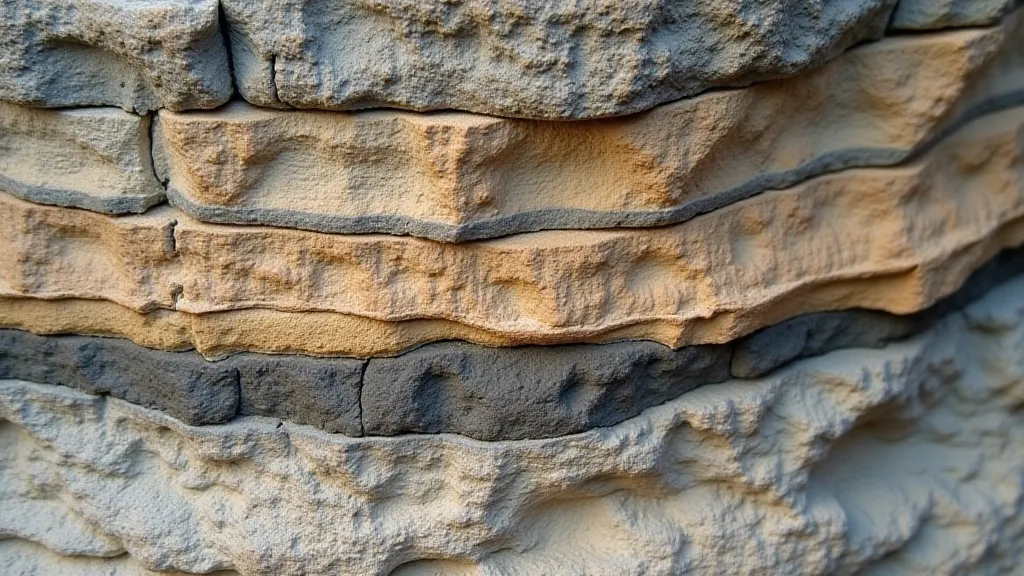
The Narrative Layers: What Do They Tell Us?
The composition of a rock layer is the first clue. Shale, for example, is typically formed from compressed mud and clay, often found in quiet, shallow water environments like lakes or estuaries. The presence of shale might suggest a period of slow accumulation in a protected area. Sandstone, composed of cemented sand grains, indicates a higher-energy environment like a riverbed or beach. Limestone, largely formed from the accumulation of marine organisms and their calcium carbonate shells, paints a picture of a warm, shallow sea teeming with life. The types of fossils embedded within these layers offer even more specific details about the flora and fauna that existed at the time of their formation. Sometimes, the beauty and inherent value of these stones go beyond their geological significance; for those seeking inspiration, the fiery hues of gemstones like garnets can be a powerful muse – you can explore more about that in "The Garnet's Fire: Igniting Creativity Through Gemstone Inspiration".
Consider a sequence of alternating shale and sandstone layers. The shale might represent a period of calm, where fine sediments slowly settled out of the water. The sandstone layer might indicate a sudden influx of coarser material, perhaps a flood event or a change in the coastline. Examining these variations, their thickness, and their arrangement allows us to reconstruct the environmental conditions that prevailed during the rock's formation. It's like piecing together a documentary film, frame by frame, using the rock as our medium.
Personal Connection: A Rockhound's Journey
I remember my first significant discovery of a layered rock formation. I was a young boy, on a family trip to the Grand Canyon. While the immense scale of the canyon was awe-inspiring, it was the intricate layering of the rock walls that truly captivated me. Each band of color, each subtle shift in texture, spoke of a history stretching back millions of years. I felt a profound sense of humility, realizing how fleeting our own existence is compared to the vastness of geological time. I started collecting small samples, carefully labeling them with the location and the date. Those rocks became more than just geological specimens; they became tangible connections to the Earth's deep past. That initial fascination evolved into a desire to understand not just the geological processes involved, but also the artistry inherent in transforming rough stone into something beautiful. The meticulous care and skill required echoes the dedication of a gemsmith, carefully choosing and shaping stones to tell a story – a concept explored in more depth in "Gemsmith's Alchemy: Forging Jewelry Narratives Through Stone and Metal".
That early fascination blossomed into a lifelong pursuit of rockhounding and lapidary techniques. Learning to identify rocks and minerals isn’t simply about memorizing names and chemical formulas. It’s about developing an intuitive understanding of how these materials form and the processes that shape them. Even simple techniques like tumbling rocks for beginners can reveal the hidden beauty within – uncovering vibrant colors and intricate patterns that were previously obscured. Creating custom jewelry from these natural materials allows you to carry a piece of Earth's history with you, a constant reminder of the planet’s incredible story.
Craftsmanship and the Geologist’s Eye
The meticulous nature of both geology and the craftsmanship involved in restoring antique instruments like accordions is surprisingly similar. Just as a skilled accordion repairman carefully removes layers of old glue and varnish to reveal the original wood beneath, a geologist painstakingly analyzes rock layers to uncover the geological history they contain. Both require patience, attention to detail, and a deep appreciation for the materials they are working with. An accordion’s bellows, for example, is a layered construction of fabric and leather, carefully glued together to create a flexible and airtight seal. Understanding the properties of these materials and the techniques used in their assembly allows for a more informed and effective restoration.

Beyond Identification: Interpreting the Narrative
Identifying a rock or mineral is just the first step. The real challenge lies in interpreting the narrative that it tells. This involves understanding the geological context in which it was formed, considering the surrounding rock layers, and looking for evidence of past environmental conditions. Fossils, of course, are invaluable clues. The presence of marine fossils in a layer of shale indicates that the area was once covered by a sea. The type of fossil can also provide information about the climate and the ecological conditions that existed at the time.
Even seemingly insignificant features, like the color and grain size of a rock layer, can be revealing. For instance, a layer of red sandstone might indicate the presence of iron oxides, suggesting an oxidizing environment. A fine-grained texture suggests slow deposition, while a coarse-grained texture suggests rapid deposition. The careful process of revealing the hidden beauty within a stone, much like the mindful creation of a cabochon, can also be a path to inner peace and a deeper connection with the natural world - a concept further explored in "Sculpting Silence: The Art of Cabochon Making as a Reflection of Inner Peace".
Mineral Collecting Guide and Geology Hobby Projects
For those interested in exploring this fascinating world, there are countless resources available. Mineral collecting guides can help you identify common rocks and minerals, while geology hobby projects can provide hands-on experience in geological analysis. Rockhounding locations map are essential tools for finding areas rich in geological treasures. From simple field trips to more advanced laboratory experiments, there are opportunities for everyone to learn and appreciate the incredible story that is written in stone. Sometimes, the stones themselves inspire a feeling of serenity and gentle compassion, reflecting the softer qualities often associated with gemstones like rose quartz - its power and the creative flow it inspires can be explored in "The Rose Quartz Whisper: A Guide to Compassion and Creative Flow".
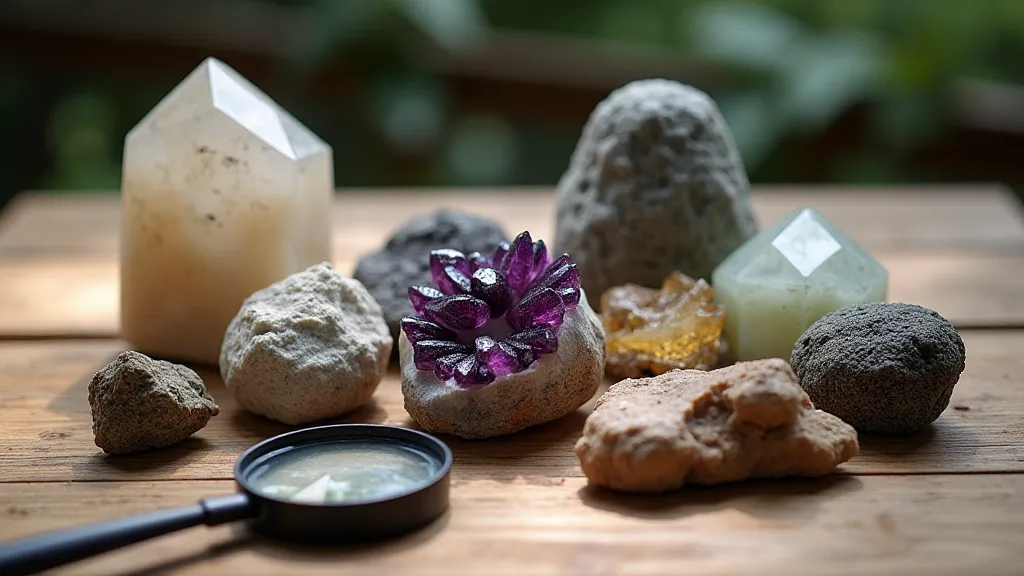
The complexity of geological processes can feel overwhelming at first. Consider, for example, the delicate balance between erosion and deposition. Erosion, driven by wind, water, and ice, relentlessly wears down landscapes, breaking rocks into smaller fragments. Simultaneously, deposition involves the accumulation of these fragments, gradually building up new layers of sediment. This continuous cycle shapes the Earth's surface over immense timescales, often obscured by the apparent stillness of the present. Understanding this dynamic interplay is crucial to piecing together the narrative held within a palimpsest. The power of understanding and appreciating these processes can be profoundly rewarding.
Furthermore, the study of geological palimpsests often requires a multidisciplinary approach. Geologists may collaborate with biologists, chemists, and physicists to gain a more comprehensive understanding of the environmental conditions that prevailed during a rock’s formation. For instance, the presence of certain organic compounds within a rock layer can provide valuable insights into the climate and the types of organisms that existed at the time. The fusion of different scientific disciplines is essential for unraveling the complex history embedded within the Earth's crust.
Finally, it’s worth noting the ethical considerations involved in rockhounding and mineral collecting. Responsible collectors should always respect the environment and adhere to local regulations. It's important to avoid disturbing fragile ecosystems and to leave collecting sites as they were found. Sustainable collecting practices ensure that these natural resources can be enjoyed by future generations.
Ultimately, reading a geological palimpsest is an exercise in perspective. It's a humbling reminder of the immense timescale of Earth's history and our own fleeting place within it. It's about appreciating the artistry of nature, the power of geological processes, and the enduring beauty of the Earth's story, written in the layers of stone – just as an antique accordion whispers tales of a time long past through its aged and resonant voice.
